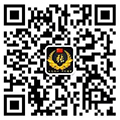Eddy current dynamometer is a device that uses eddy current to generate braking torque to measure mechanical torque. It consists of an electromagnetic slip clutch, a load cell, and a speed generator. The input shaft of the tested power machinery is connected to the electromagnetic slip clutch, driving the armature to rotate. The magnetic pole is stopped by the force measuring arm installed on it, and can only swing within a certain range by one angle. With the help of a load cell, the electromagnetic torque between the armature and the magnetic pole can be directly read from this swing angle. When measuring errors such as wind and friction losses are excluded, this electromagnetic torque is equal to the output torque of the tested power machinery. Eddy current dynamometer can only generate braking torque and cannot operate as an electric motor. When increasing the throttle opening from idle, the engine speed first increases. After reaching a certain opening, the engine speed is reduced to increase the torque. At this point, the two have an opposite relationship. At any speed, when the throttle opening drops to 0, the engine will return to idle. When a DC motor runs from the first quadrant to the second quadrant, the direction of rotor rotation remains unchanged. May I ask if the direction of electromagnetic torque also remains unchanged? Why? Answer: The direction of electromagnetic torque changes. Although the speed n did not change direction, the sign of T changed from positive to negative from the first quadrant to the second quadrant, and the direction of electromagnetic torque can also be obtained by the formula T=CT Φ Ia<0, Ia<0. What is the impact of the size of the energy consumption braking resistor on braking time, and why? Answer: According to experimental data, the larger the braking resistance, the longer the braking time. According to the formula P=Ea2/(Ra+RH), it can be seen that the larger the energy consumption resistance RH, the smaller the power, and thus the longer the energy consumption braking time. What is the impact of the size of the reverse braking resistor on the braking time, and why? How should the polarity of the armature current change during reverse braking? Answer: According to experimental data, the larger the reverse braking resistance, the longer the braking time. According to the formula P=Ea2/(Ra+RH), the larger the energy consumption resistance RH, the lower the power, and thus the longer the energy consumption braking time. During the reverse braking process, the armature current Ia=(- UN Ea)/(Ra+RH), so the direction of the current is opposite to that during normal operation.
Welcome!

Service Hotline
18994987292
Hot Keywords: Magnetic powder dynamometer hysteresis dynamometer
Advanced Search:
News
Contact UsContact Us
WhatsApp:+8618867660609
(7 days * 24 hours)
Phone(Weixin):18994987292
WhatsApp:+8618867660609
QQ:961543194
Email:961543194@163.com
Address:Building 5, No. 65 Guanhe Middle Road, Tianning District, Changzhou
dynamic
Your Current Location :Home
» News
» dynamic
» How is the electromagnetic torque set in a dynamometer?
How is the electromagnetic torque set in a dynamometer?
Source: Time:2021-01-07 17:53:25 views:
Eddy current dynamometer is a device that uses eddy current to generate braking torque to measure mechanical torque.
 Address:Building 5, No. 65 Guanhe Middle Road, Tianning District, Changzhou
Address:Building 5, No. 65 Guanhe Middle Road, Tianning District, Changzhou  Phone":0519-80581099
Phone":0519-80581099 E-Mail:961543194@qq.com 备案号:
E-Mail:961543194@qq.com 备案号: About
About Product
Product NEWS
NEWS follow with interest
follow with interest